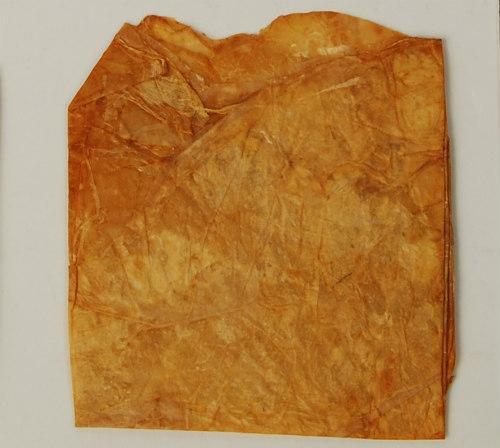The Caul, an object of sailor's supersitions

17 September 2019 marks the 79th anniversary of the sinking of child evacuee ship the City of Benares. She was sunk mid-Atlantic by a German u-boat with catastrophic loss of life, particularly amongst the young evacuees she was carrying. The Royal Navy rushed to rescue survivors but, after a dangerous dash through the night, arrived to find that many of those who had survived the torpedo had perished in the freezing conditions. Only a handful of the hundred children on board were amongst the survivors.
Utterly unexpectedly, eight days after the sinking, Lifeboat number 12 was found containing another 45 survivors, and amongst them were a further six of the children.
I’ve been writing about the City of Benares for some years now and have enjoyed meeting several fellow researchers along the way. Earlier this year I was lucky enough to get a preview of an upcoming book from one of those researchers. American author Deborah Heiligman has written a new book about the sinking, ‘Torpedoed’.
I learnt a number of new things from Deborah’s research and something that particularly caught my eye was the fact that one of the boys who survived in Lifeboat 12, Fred Steels, was born with a caul. This means that he was born with a piece of the birth membrane covering his face. The caul is harmless and can be removed by the attending doctor or midwife. It is however extremely rare, occurring in roughly 1 in 80,000 births. It is probably fair to speculate that it is this rarity that drove the superstitions surrounding these births. It has variously been seen as a sign that the child will be lucky, or achieve greatness, or that they would have special powers to resist evil. More pertinently though a caul was believed by seafarers to protect the bearer from drowning, and these curious items were prized as talismans.
Superstitions are often born in face of the unknowable and the uncontrollable, an attempt to make sense of the world through stories, or to allay very natural human fears of things we cannot influence or understand. With that in mind it is perhaps not surprising that, as workers in a dangerous industry often at the mercy of the weather, seafarers have historically held many superstitious ideas. Indeed those on board the City of Benares were unhappy when she was delayed setting sail from Liverpool, meaning that her departure date became Friday 13th.
Fred Steels was from a seafaring family, his grandfather had been at sea and had owned two of his own ships and Fred had two uncles in the Navy. His mother therefore was aware of the value seafarers placed on cauls and sold Fred’s to the skipper of a fishing boat for £5, a not insignificant sum at that time. What became of Fred’s caul or the skipper who purchased it we don’t know but Fred himself went on to survive being torpedoed and adrift at sea for over a week. Undeterred by this experience he later went on to serve for eight years in the navy.
A superstitious person might say that Fred’s being born with a caul was the reason he survived the sinking of the City of Benares, and certainly it is fair to say he was saved by good fortune. On a night when so many children and adults died, he was lucky to be in one of the only lifeboats not to be swamped by freezing water. Furthermore his lifeboat was extraordinarily fortunate to be spotted after eight days, just as their water supplies were running out, by a passing Allied plane. Luck, chance, superstitious beliefs, whatever you attribute his survival to, his parents were amongst the few to welcome their child home.
If you’d like to see one of these unusual items there will be one on display in the Merseyside Maritime Museum when our new gallery exploring seafarers’ lives and experiences opens next year. Do come and visit us and see the caul alongside many other stories of the seafarers that made our city what it is today.
